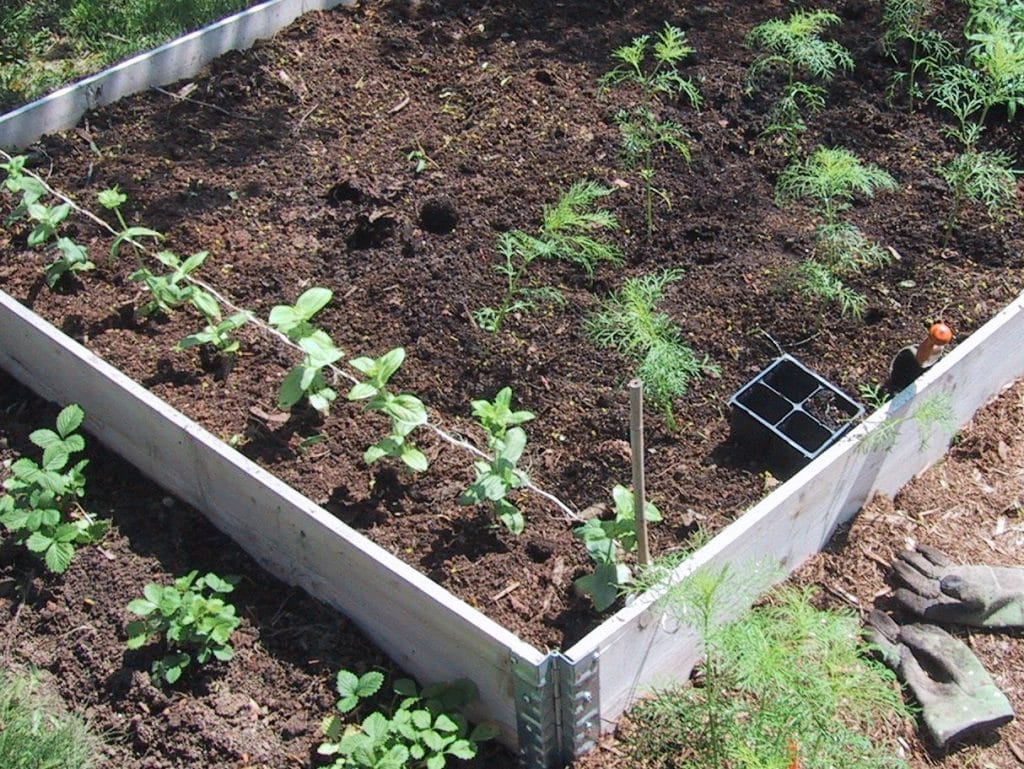
In a garden, raised beds — beds with soil higher than the surrounding area — are a popular way to corral the chaos when growing vegetable or cutting flowers.
Making a raised bed can be as simple as mounding soil up and then planting in it. However, without some sort of barrier to keep the soil in place, the depth of a raised bed is limited, and the edges of the bed eventually erode away. Plastic, brick, stone, wood or metal are possible options for containing soil more permanently.
In my own garden, I have had success with 1 X 8 inch boards of untreated cedar attached to flexible hinges from Lee Valley Tools. Using four hinges, you can make a bottomless box that can be easily moved into position and then filled with a mix of topsoil, peat moss and compost to get plants off to a strong start without needing to double dig the soil.
Raised beds have other attributes, too.
1. Soil warms up faster in the spring, which means earlier planting.
2. Soil drains faster, especially helpful if you garden on heavy clay.
3. You’ll be able to grow more plants per square foot. Plants can be spaced closer together and in blocks, not rows, because there’s no need to walk along to harvest or cultivate.
4. No walking on the soil means less compaction.
5. Closer planting means plants shade the soil, discouraging weeds from germinating.

Love your articles. What soils are in your raised gardens.
Thank you. In the first year or two, we filled the beds with a combination of triple mix or bagged manure along with garden soil that was onsite. Currently, we improve the soil by spreading a three-inch layer of shredded leaves over the top of the beds every fall; these slowly decompose over the winter. If there is compost ready in the compost bins, that’s added, too. In the spring, the shredded leaves are lightly forked in to the existing soil. I don’t rototill or double dig; my feeling is that this compromises the soil structure.